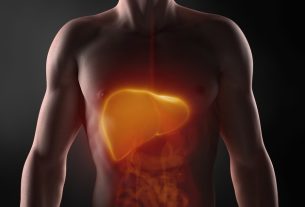Eating disorders are serious changes in eating behavior and are characterized by changes in the way one eats, usually due to an obsession with weight loss, body appearance and excessive physical activity.
These eating disorders can be classified into different types, such as anorexia, bulimia nervosa, binge eating, among others, and can have different characteristics, such as spending several hours without eating, frequent use of laxative medications, eating excessively and causing vomiting. , for example.
Eating problems can have consequences for a person’s physical and mental health and put their life at risk. In general, it happens more frequently in women, especially during adolescence, and may be related to problems such as anxiety, depression and drug use.

Main eating disorders
The main eating disorders are:
1. Anorexia
Anorexia or anorexia nervosa is a disorder in which a person has an excessive fear of gaining weight, causing dietary restriction and a reduction in food consumption, which leads to significant weight loss without the person noticing. This happens because the person presents a change in the real perception of their weight and body silhouette.
Weight loss in anorexia can occur due to dietary restrictions accompanied by intense physical activity, in addition to causing vomiting and excessive use of diuretic or laxative medications.
Main symptoms: looking in the mirror and feeling fat, not eating to avoid gaining weight, counting the calories in a meal before eating, avoiding eating in public, exercising excessively to lose weight, taking medication to lose weight, changes in mood and state of mind. It is very common for women who experience this dietary change to begin to experience menstrual changes, including the absence of menstruation. Check out more symptoms of anorexia.
How is the treatment: The basis of anorexia treatment is psychotherapy, which will help improve behavior in relation to food and one’s own body. In some cases, the intervention of a psychiatrist may be necessary, who may recommend the use of antidepressant and anxiolytic medications that help improve the response to treatment, in addition to helping to alleviate symptoms of depression and anxiety.
In addition, there must be nutritional monitoring to guide a healthy diet and the use of dietary supplements to make up for the body’s lack of nutrients.
2. Bulimia
Bulimia is characterized by frequent episodes of binge eating, in which large amounts of food are consumed, followed by inappropriate compensatory behaviors such as forcing vomiting, using laxatives or diuretics, going without food and exercising excessively to try to control weight. .
This disorder easily goes unnoticed, being noticed when it is already in a more advanced stage.
Main symptoms: mood changes, practicing a lot of physical activity, eating large amounts of food in secret, dehydration and gastrointestinal changes, chronic inflammation in the throat, gastric reflux, cavities and tooth sensitivity. Episodes of binge eating can be triggered by personal problems, feelings related to weight, lack of control, feelings of guilt and depressive mood.
How is the treatment: It is carried out with psychological support to reverse behavior in relation to food and nutritional monitoring, to provide guidance on the adequacy of the diet and the balance of nutrients. Additionally, it may be necessary to use medication for anxiety and to control vomiting. See more about bulimia treatment.
3. Binge eating
The main characteristic of binge eating is frequent episodes of overeating, even when you are not hungry. There is a loss of control over what to eat, but there are no compensatory behaviors such as vomiting or use of laxatives.
Main symptoms: eating excessively even when you are not hungry, difficulty stopping eating, eating too quickly, consuming strange foods such as raw rice or cold beans, and being overweight.
How is the treatment: Psychological support should be provided to help identify the causes of binge eating episodes and regain control over food. Nutritional monitoring is also usually necessary to control weight and likely health problems resulting from the disorder, such as high cholesterol and fatty liver.
4. Orthorexia
Orthorexia is an exaggerated concern about what you eat, leading to an obsession with always eating correctly, with healthy foods and extreme control of calories and quality.
Main symptoms: study a lot about healthy eating, avoid processed foods or foods rich in fat or sugar, avoid eating out, always eat organic products, plan your meals carefully.
How is the treatment: includes medical and psychological support, in order to improve the relationship with food and show the patient that they can be healthy even without restricting their diet so much. See more details about orthorexia.
5. Vigorexia
Vigorexia, also known as muscular dysmorphic disorder or Adonis Syndrome, is characterized by an obsession with having the perfect body, leading to excessive physical exercise.
Main symptoms: extreme tiredness, irritability, excessive use of dietary supplements, physical exercise until exhaustion, excessive concern about food, insomnia and muscle pain. Know how to recognize the symptoms of vigorexia.
How is the treatment: It is carried out with psychotherapy, with the aim of making the individual accept their body and increase their self-esteem, in addition to nutritional monitoring for adequate guidance regarding the use of supplements and the prescription of an adequate diet for training.
6. Gourmet Syndrome
Gourmet Syndrome is a rare disorder characterized by excessive concern about food preparation, from purchasing the ingredients to the way it will be served on the plate. Furthermore, people with this disorder eat excessively and are obsessed with food.
Main symptoms: frequent consumption of exotic or special dishes, excessive concern with the quality of purchased ingredients, spending a lot of time in the kitchen, being very careful when preparing food, always serving well-decorated dishes.
How is the treatment: It is mainly done with psychotherapy, but when the syndrome leads to excess weight, consultation with a nutritionist is also necessary.
7. Night eating disorder
Nocturnal eating disorder, also known as night eating syndrome, is characterized by a lack of appetite in the morning, compensated by a large intake of food during the night, which is accompanied by insomnia.
Main symptoms: waking up at night to eat, not feeling hungry or eating little during the day, not always remembering that you ate a lot during the night, being overweight.
How is the treatment: It is done with psychotherapy and the use of medications to regulate sleep and, when necessary, antidepressants.
8. Diabulimia
Diabulimia is a serious eating disorder that occurs in people with diabetes, mainly type 1 diabetes, in which the person reduces the amount or does not take the appropriate dose of insulin needed to regulate blood sugar, with the aim of losing weight. .
Main symptoms: avoiding medical check-ups, excessive concern about body image, sudden increase or decrease in food consumption, concern about food, weight and/or calories, avoiding eating with family or in public, depression and/or anxiety, loss of excessive weight.
How is the treatment: diabulimia must be treated with a psychologist to confirm the diagnosis and initiate the most appropriate treatment. In addition, other health professionals, such as nutritionists or endocrinologists, must also participate in the treatment.
9. Unspecified eating disorder
Unspecified eating disorders are incomplete conditions than anorexia or bulimia, since they are at the beginning or because they are in the process of recovery. Therefore, there are symptoms related to eating behavior, but they do not meet sufficient diagnostic criteria to diagnose anorexia or bulimia.
Main symptoms: mild dietary restriction, low weight, distorted body image, excessive eating, feeling guilty and, sometimes, compensatory behaviors.
How is the treatment: unspecified eating disorder is generally treated in the same way as other eating disorders, that is, through psychotherapy sessions to help improve eating behavior, in addition to guidance from a nutritionist to receive dietary guidance as needed.

Sign up for our newsletter and stay up to date with exclusive news
that can transform your routine!
Warning: Undefined array key "title" in /home/storelat/public_html/wp-content/plugins/link-whisper-premium/templates/frontend/related-posts.php on line 12
Warning: Undefined array key "title_tag" in /home/storelat/public_html/wp-content/plugins/link-whisper-premium/templates/frontend/related-posts.php on line 13



